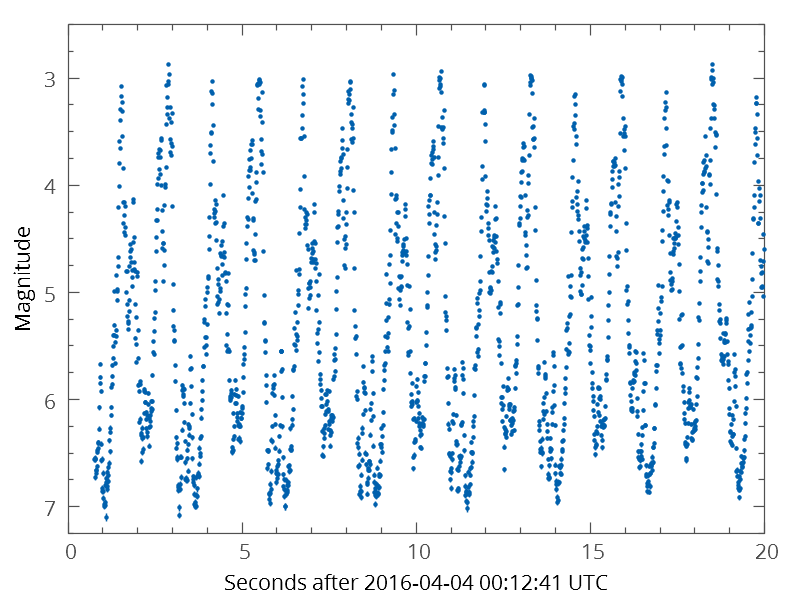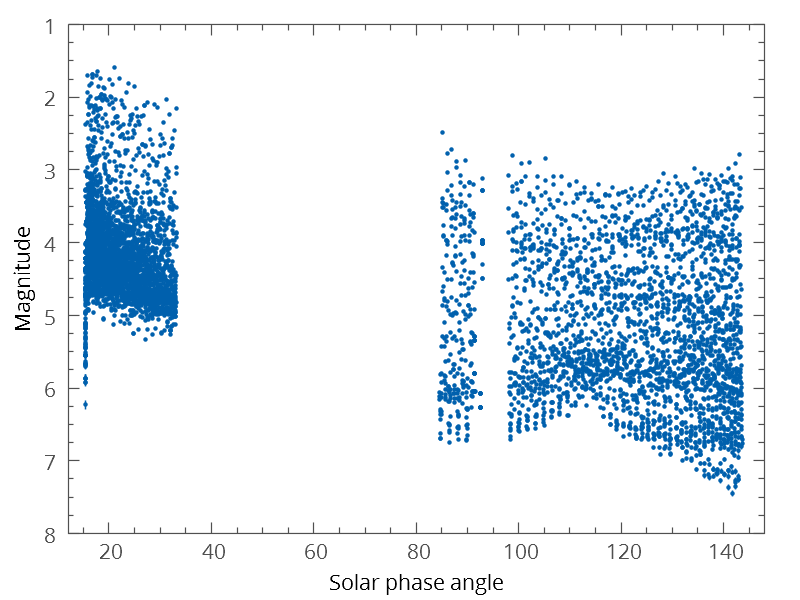
Tracking and Photometry of Hitomi and its Debris
Hitomi, also known as ASTRO-H, is a Japanese X-ray astronomy satellite which experienced a catastrophic event on March 26, 2016. Shortly afterwords, the U.S. Joint Space Operations Center reported several pieces of debris from the breakup. Using OSCOM, ERAU Engineering Physics students obtained rapid brightness measurements of the satellite and debris fragments tumbling through space. These state-of-the-art high speed measurements— up to 100 samples per second for the main fragment— reveal bright reflections of solar light caused by different parts of Hitomi. The data show a strong and consistent flash pattern with a period of 2.6 seconds.
The video below is an example of OSCOM assets (11" Celestron Rowe-Ackermann Schmidt Astrograph and Manta G-235 camera) tracking Hitomi's debris K. For this particular pass a full frame capture was done. You can see stars streak by as the debris flashes periodically.
For the main Hitomi body, a sub-frame capture was performed. As a side effect, the video below does not have any stars streaking by, but the high frame rate - 100 fps - allows for significantly more points in photometry output as shown in the figure to the right.
The plot below showcases the photometry of the Hitomi/AstroH main fragment through the sky with varying solar phase angle. We have data dropout due to some building architectural elements obstructing the FOV as well as the meridian flip of the telescope mount. Nevertheless the figure shows the impressive range that the OSCOM system can cover.



